«A quando ritorneremo e l'orologio sopra la porta ricomincerà a pulsare». Strategie e problemi della ricostruzione nei centri abbandonati delle Marche dopo il sisma del 2016
Abstract
Il paesaggio da sempre porta su di sé i segni delle mutazioni prodotte dall’azione dell’uomo e della natura configurandosi perciò come quell’insieme di “forme” proprie di “quel” determinato ambiente e delle loro reciproche relazioni. Le scosse sismiche, che dall’agosto del 2016 hanno interessato un ampio brano del territorio appenninico, hanno ferito ed irrimediabilmente segnato i paesaggi antropici naturali ed i loro centri antichi con le loro diversità storico culturali. Il saggio intende focalizzarsi su alcune realtà dell’area collinare appenninica del versante marchigiano, in particolare sull’area cosiddetta “cratere”. Luoghi già da tempo in via spopolamento, perché lontani dai poli di maggior attrazione economica e dalle grandi infrastrutture di comunicazione. Un fenomeno, quello dell’abbandono, che all’indomani dello sciamo sismico del 2016 si è accentuato in maniera significativa apparendo in molti casi quasi irreversibile. Partendo quindi da tre realtà segnate dal terremoto in modo diverso, si vuole riflettere su alcune delle strategie messe in atto per impedire la scomparsa totale di un patrimonio. Nell’affrontare il tema della ricostruzione accanto alle problematiche della salvaguardia della forma urbana, ci si interrogherà su come e perché ricostruire in situ, sui rischi delle SAE (soluzioni abitative d’emergenza), ma soprattutto su quale risultato la popolazione si aspetta e quale sarà l’utilizzo di questi borghi.
«Till the day we come back and the clock over the door starts ticking again» Strategies and Problems of the Forsaken Towns of the Marche after the 2016 Earthquake
Every landscape is deeply affected and molded by the actions of nature and mankind and it slowly becomes the collective sum of the “shapes” of “that” specific environment and their mutual interactions. The seismic shocks that occurred in August 2016 devastated a large portion of the Apennine territory. They changed and irrevocably scarred the natural landscape and the unique old local towns. This essay will focus on specific examples of the Marchigian Apennine hillside area and, more specifically, on towns located in a portion of the territory called “the crater”. For the past few years, these locations have been slowly abandoned as they are distant from the main economic centers and from any major transportation infrastructure. This has been the case even more since the 2016 earthquake, which profoundly devastated these areas, making the trend almost irreversible. Starting with three sites affected by the earthquake in different ways, this essay will present strategies and action plans to avoid the complete disappearance of this inestimable patrimony. While discussing the reconstruction and restoration approaches for the historic urban centers, the essay will present the risks of using SAE (Emergency Living Modules), and will propose ways to rebuild local structures using recovered rubble material, now itemized and properly stored, as well as speculating on what the local people’s expectations are and what the future use of these towns will be.
Parole chiave
Full Text
PDFDOI: https://doi.org/10.14633/AHR247
Refback
- Non ci sono refbacks, per ora.
Copyright (c) 2020 Andrea Ugolini; Annalisa Conforti

This work is licensed under a Creative Commons Attribution-NonCommercial 4.0 International License.
........................................................................................................................................................................................................................................................................................................................................................
ArcHistoR è una rivista open access e peer reviewed (double blind), di Storia dell’architettura e Restauro, pubblicata dall’Università Mediterranea di Reggio Calabria. La rivista ha cadenza semestrale. È una rivista di Classe A (ANVUR) per l’Area 08 - Ingegneria civile ed Architettura, settori C1, D1, E1, E2, F1.
Comitato scientifico internazionale
Maria Dolores Antigüedad del Castillo-Olivares (Universidad Nacional de Educación a Distancia de España), Monica Butzek (Kunsthistorisches Institut in Florenz), Jean-François Cabestan (Université Paris 1 - Panthéon Sorbonne), Alicia Cámara Muñoz (Universidad Nacional de Educación a Distancia de España), David Friedman (Massachussets Institute of Technology), Alexandre Gady (Université Paris-IV-Sorbonne), Jörg Garms (Universität Wien), Miles Glenndinning (Scottish Centre for Conservation Studies, University of Edinburgh), Mark Wilson Jones (University of Bath), Loughlin Kealy (University College Dublin), Paulo Lourenço (Department of Civil Engineering, University of Minho), David Marshall (University of Melbourne), Werner Oechslin (ETH, Zurich, Stiftung Bibliothek Werner Oechslin, Einsiedeln), José Luis Sancho (Dirección de Conservación de Bienes Histórico-Artísticos, Palacio Real, Madrid), Dmitrij O. Švidkovskij (Moscow Architectural Institute, MARCHI)
Comitato direttivo
Tommaso Manfredi (direttore responsabile), Giuseppina Scamardì (direttore editoriale), Antonello Alici, Salvatore Di Liello, Fabrizio Di Marco, Paolo Faccio, Mariacristina Giambruno, Bruno Mussari, Annunziata Maria Oteri, Francesca Passalacqua, Edoardo Piccoli, Renata Prescia, Nino Sulfaro, Fabio Todesco, Guglielmo Villa
........................................................................................................................................................................................................................................................................................................................................................
Laboratorio CROSS. Storia dell'architettura e Restauro

ISSN 2384-8898

This work is licensed under a Creative Commons Attribution-NonCommercial 2.0 Generic License.

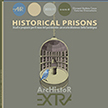
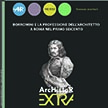

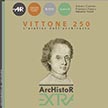
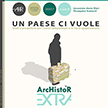
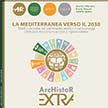
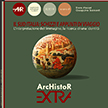
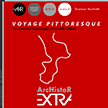
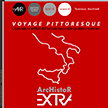
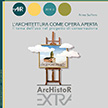
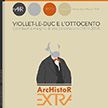

_2.jpg)



